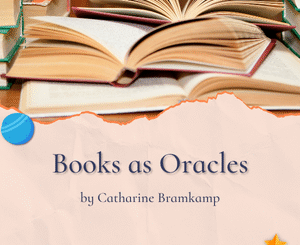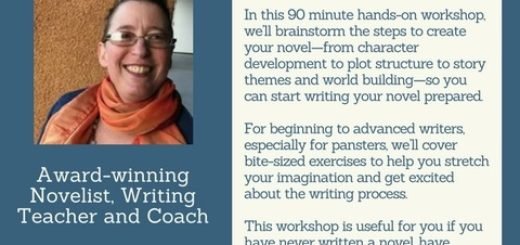How to Get Your Book in Libraries
 I think it’s absurd that indie authors have to fight to get their books in libraries! Even if you’re a bestselling indie author, libraries won’t order a single copy of your book unless they get enough requests from their members. Want to donate a copy to the library? Even then, your book might get lost while being prepped for circulation, or it may end up on the dollar sale shelf. So what’s an indie author to do?
I think it’s absurd that indie authors have to fight to get their books in libraries! Even if you’re a bestselling indie author, libraries won’t order a single copy of your book unless they get enough requests from their members. Want to donate a copy to the library? Even then, your book might get lost while being prepped for circulation, or it may end up on the dollar sale shelf. So what’s an indie author to do?
Why Libraries?
Before learning how to get your book in libraries, it’s important to know why libraries are so great.
They’re not.
Think about it. If your book is in libraries all over the country, hundreds and thousands can read it without paying for it. Do you really want to cost yourself hundreds and thousands of sales of your book?
Of course not!
Case and point: I have my book in six libraries and so far, my book has sold at about 100 books a month. My father has his book in 16 libraries (because his book was listed in a magazine for librarians) and he hasn’t sold any books. This suggests that libraries don’t improve sales.
But here’s the cold, hard truth. You’d be a rare writer indeed if you could make a living from your book sales. It’s doable, but the first step is to get a blizzard of die-hard fans wanting to read your every word. And since the first step is to connect with your fans-to-be, it’s vital to get as much exposure for your first book as you can.
Libraries are a great place for that exposure.**
When readers check out your book from the library, you are successfully building your community of fans. And even if they never spend a dime on your books and just wait until your other books arrive at the library, they will help your fan base grow via word-of-mouth.
**However, libraries are only good for making your book accessible. Your book will build dust on the shelves unless you have a killer title and great presentation. Find out how to determine the best title for your book. And find out how to make sure the book’s looks are spectacular.
How to Get Your Book in Libraries
First of all, there are different kinds of libraries. To name a few, there are school libraries, public libraries, university libraries, and specialized libraries. This post will address those of you who are self-published authors with novels to be catalogued in public libraries. Also, the method I share below works for authors who publish with Lightning Source or CreateSpace, but may not work for other print-on-demand companies.
There are two ways to get your novel in the public library system. The front door way and the back door way.
The Front Door
The front door way involves asking libraries all over the country to buy your book. They will then check their special library sources, like Publishers Weekly and Kirkus, to see how great your book is. But your book isn’t even mentioned. When that fails, they’ll look up your book by title to see what the catalogue number is and the indexed subjects your book is listed under. When they see your book doesn’t have a catalogue number and isn’t even listed anywhere in any library system, they’ll turn down your request. The front door is locked.
The Back Door
The easiest way to get your novel in the public library is the back door way. Find the main library near you and talk to the Collection Development department. Be very friendly, donate your book to them, get their phone number, and follow up after a week to check on the status of your book. If you’re successful, a few things happen. Not only is your book available to that library, but now your book has a catalogue number and five indexed subjects applied to your book. Your book is officially in the library system!
Your next step is to reach the librarians across the nation. The simplest way is to have a library campaign. Rally up your contacts all over the U.S. who love and respect you to send out requests to all their contacts. Have them tell all their friends to request your book at their local library. They can request your book online or in-person. Librarians take patron requests seriously.
A time-consuming, but more effective way to reach librarians is to use what Nancy K. Humphries in her outstanding ebook Marketing Your Book to Libraries calls the laddered strategy. Start by getting small time good reviews in places like Amazon and people’s blogs. Use those reviews to get to big time reviewers, like your local newspaper or magazine. Afterwards, use those big time reviewers to get to the high-brow review magazines librarians read.
The special reviews librarians read are in Publishers Weekly (Publishers Weekly Select for self-published authors), Kirkus, Library Journal: Library News Reviews and Views, and Booklist. In some cases, you can get your book listed and sometimes reviewed in one of these journals by paying a fee. When sending review copies of your book to more than one of these special review publications, be sure to send your book along with a one-sheet to them all at the same time. Booklist, for example, won’t want to publish a review about a book that’s already been listed in Kirkus.
Once you’re published in those highly-select places, librarians might see your book there and order a copy. But just to make sure, send out a one-sheet to librarians citing those high-brow reviews. A one-sheet is a letter tailored to the librarian (or reviewer) with their name, a hook about your book, three reasons why your book is good for your readers, a comparison to a popular book, review excerpts, a call to action, and your signature.
Next time, I’ll go into how to write a one-sheet. For now, work on getting those small-time reviews!
***
 Book marketing mentor, Ezra Barany is the author of the award-winning bestseller, The Torah Codes. Contact Ezra today to begin the conversation on how he can help you now via Facebook, Twitter, or contact him through this blog, or email: EZRA at THETORAHCODES dot COM.
Book marketing mentor, Ezra Barany is the author of the award-winning bestseller, The Torah Codes. Contact Ezra today to begin the conversation on how he can help you now via Facebook, Twitter, or contact him through this blog, or email: EZRA at THETORAHCODES dot COM.







Hi Ezra;
Very useful article, as usual! I’ve spoken to colleagues at major metropolitan libraries and just so you know, they’re not TRYING to make it hard on authors! You can imagine how hard it is keeping up with fluctuating budgets, demand, multiple overlapped orders, market demand, new fads, dozens of media from video to coloring books, and the institutional system we call a ‘city’ – ugh, thank god we don’t work for an organization like that!
I learned that the reason the Collections Director can’t always rely on print-on-demand producers is because they often don’t have books in stock when a member requests a book, so those books then don’t show up on time when ordered. Members are upset when that happens figuring it’s the library’s fault, rather than the publisher’s.
Libraries love Baker & Taylor (distributor) because they can easily go online to see if certain requested books are in stock- and even how many are on hand. They love and respect authors. After all, that’s why they chose this profession. And I’m sending your great article along so they can pass it along to other authors in need.
Now please stop all this blogging and finish your sequel for those of us fans who are chomping at the bit!!! 🙂
I have my nonfiction ghost books in libraries–more than 16, and they sell well. I admit I’ve always read a book in hardcover when it comes out first by checking to see if my local library has it to see if the book is worth buying in hardcover, and nowadays, wait until out in paperback, or see if out in eBook form (mainly Kindle as I have a Kindle). So actually, no set rules on what you thought. I do not donate much anymore as donated a fiction book of mine published by a small press to my own local library and they donated to their used books sale. I found out they depend on reviews-Goodreads, of all things. Others depend on other reasons for buying a book for inclusion in their branches.
The only reason good to get in a library-two things: (A.) some readers might like your book and then go out and buy it for their own shelves, and (B) libraries buy these books outright and no returning back to publisher if do not sell like bookstores do after a certain time.
As an indie (meaning self-published, I assume), need to be on Baker and Taylor for most libraries to order anyway, rest might be Ingrams, one admitted to ordering mine from Amazon at my talk (where I sold to a lot of their patrons afterwards).